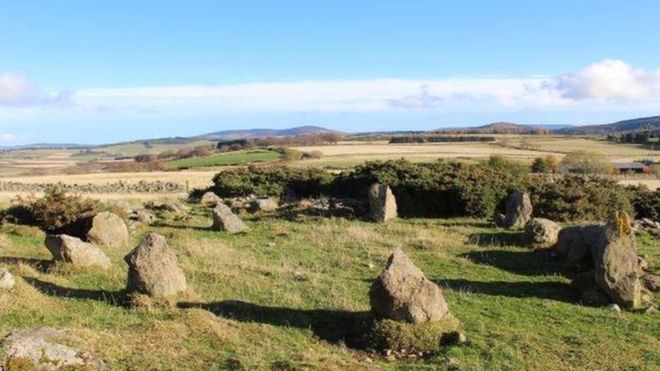Quote:
Originally Posted by Diaphone Jim

A while back we had a thread (which I can't find) about Avebury, which is often called a mini-Stonehenge.
Both old stone sites are in Wiltshire and I remembered poking around the area with satellite/terrain maps.
They are microcosms of today's map and show the monumental task of unraveling land ownership in this half of the island.
Google "Stonehenge" click on the map link that comes up and go to "satellite."
Look especially to the west and south. Zoom in and out.
Maybe Carruthers can give us an estimate how many of the hundreds of fields in an area are likely to be under the same owner or family.
|
That's a bit of a difficult one, Jim.
A typical family farm would have been about 250 acres but consolidation has taken place over the years and you often find that supermarkets, pension funds etc are now the owners of much larger holdings with professional management in place.
Equally they could be large estates in the hands of the same family since time immemorial.
A big
however...
Much of the land in Wiltshire is owned by the Ministry of Defence and is used for army training particularly on Salisbury Plain to the north of Larkhill.
It wouldn't surprise me if much more of the land in the area was owned by the MoD and leased out to farming interests.
Google Maps Link
Who owns Britain: Top UK landowners
ETA...
On the subject of stone circles, sometimes they are not always what they seem:
Quote:
An Aberdeenshire stone circle initially thought to be thousands of years old has been identified as a modern replica.
An investigation into the site at the parish of Leochel-Cushnie found the stones to be about 20 years old.
It was originally thought to be the site of a recumbent stone circle - until the man who built it came forward.
The findings sparked excitement among experts and were widely reported.
They were initially celebrated as an authentic recumbent stone circle by Adam Welfare of Historic Environment Scotland and Aberdeenshire Council's Archaeology Service.
Further archaeological analysis of the stones was being conducted when a former owner of the farm contacted Mr Welfare to say he had built the stone circle in the 1990s.
|

Quote:
Neil Ackerman, historic environment record assistant at Aberdeenshire Council, said the development was "disappointing", but hoped the site would still be appreciated.
He said: "I hope the stones continue to be used and enjoyed - while not ancient it is still in a fantastic location and makes for a great feature in the landscape.
"These types of monument are notoriously difficult to date."
Recumbent stone circles were constructed about 3,500 to 4,500 years ago and are unique to the north east of Scotland.
Their defining feature is a large horizontal stone flanked by two upright stones, usually situated between the south-east to south-west of the circle.
|
LINK